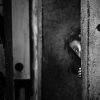
Within the beautiful grounds of Dartington Hall in Devon sits a spherical stone sculpture, over a metre high, of 12 spirals. Once, whilst walking nearby, I overheard a conversation between a young boy and his mum: “What’s that mum?” asked the boy pointing to the sculpture. “What do you think it is?” she said. After a short pause for thought he replied earnestly, “Is it God’s brain?” A perfectly reasonable reply I thought, if you’ve learnt to believe that God is a big old man with a white beard who lives in the sky.
As we grow older we may upgrade our idea of what God is, or perhaps abandon our ideas altogether and become a complete atheist. But whatever our version of ‘the truth’ is, whether we view life through the prism of religion, spirituality, science, or a combination of them all, we are still looking through a conceptual prism, still inhabiting a thought-made model of belief, and no model, however sophisticated or refined, is ever the living reality.
Of course thought is a very useful tool. This rich language we use to express our thoughts and feelings, the numbers we use to quantify and calculate, the ingenious concepts involved in the cutting edge of science and technology are all born of the inventiveness of thought. But thought looking for who we really are is like a character in a movie searching for the screen on which it appears, or the hero in a novel looking for the paper upon which the story is written—it’s not difficult, it’s impossible.
The idea of going beyond thought, beyond belief, of free falling into uncertainty, into the unknown, of being totally exposed and vulnerable with nothing left to hold, is commonly viewed as the road to ruin, madness and oblivion.
But what if we’re wrong? What if we can go beyond thought, beyond belief, and not be destroyed? What if we can drop all the conceptual prisms and find we’re still here, still breathing, still alive?
Then, without those thought-made partitions, this effortless, self-evident sense of being is revealed to be undivided from all of experience, is being all of experience—is being the thought that is now considering this statement, the movement and sound of every breath, every sensation, is being this page, the text upon it, and even the idea of a separate ‘me’ that is reading it. All are unique permutations of colour, sound, sensation, taste, smell, thought and feeling, all arising and dissolving in, and only ever made out of ourself—“the baseless fabric of this vision” as Shakespeare puts it.
To know oneself as ‘all that is’, to be fully immersed in life, saturated with all the joy, bliss, heartache and pain, the triumphs and the disasters, the satisfaction and the crushing disappointment, to feel it all, in all its bittersweet glory, is the essence of love.
And as that love radiates throughout our life, there comes a natural movement to cherish our relationships, cherish our communities, cherish and celebrate each and every expression of what we truly are—the transformational power of love becomes our living reality.
It turns out that the sculpture at Dartington Hall is entitled ‘Jacob’s Pillow’, named after the biblical figure who, sleeping with his head on a stone, dreamed of a ladder reaching from heaven down to the earth. On awaking from the dream Jacob exclaims, “This is none other than the house of God!” A statement of pure non-duality! The ladder bridges the seeming ‘gap’, revealing that there really is no separation, no split.
Such is the original meaning of the word religion—to reconnect with that which has seemingly been lost, the coming together of heaven and earth, the holy consummation.
Given the nature of Jacob’s dream, and the fact that the sculpture’s 12 spirals represent the 12 apostles, commissioned by Jesus to spread his teaching, it seems the boy’s idea of ‘God’s brain’ was truly inspired.



